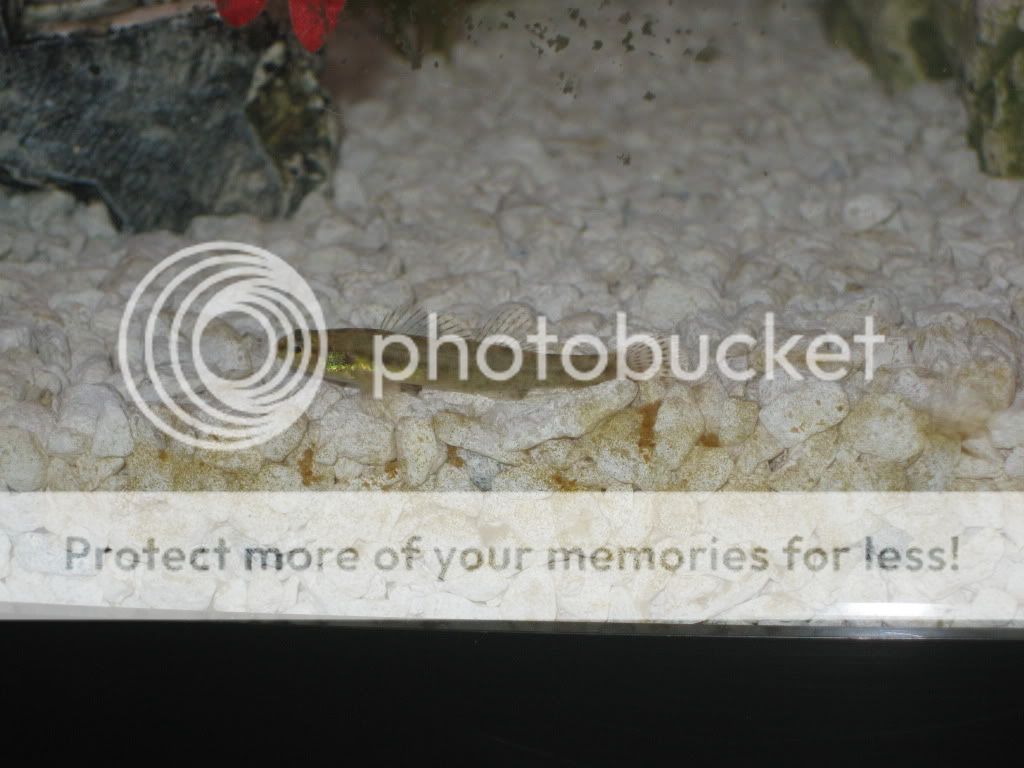Common name/s: Swamp Darter
Scientific name:Etheostoma fusiforme
Family: Percidae
Origin: Eastern North America
Maximum size: 2"
Care: Swamp darters need at least 10 gallons to live in. They are bottom dwellers. Sand is a recommended substrate as they like to bury in it. They do well in a soft water environment with a slightly acidic pH of around 6.8-7. Temperature should be kept between 14 and 26 degrees Celsius as they enjoy cooler temperatures. They are a peaceful fish. They are usually found in a brown color but can turn into an olive/gray color in light colored aquarium settings.
Feeding: Most will not accept dry foods at first. They do best on live foods but may adapt to dry foods after a period of time. Bloodworms are a favorite. They will also eat any other small live foods such as brine shrimp, daphnia, etc. They can also learn to eat freeze-dried foods such as freeze-dried bloodworms.
Sexing and Breeding: Sexing swamp darters is left to professionals. There maybe a slight color difference. Males may have a tubercles on their ventral and anal fins during spawning. Unknown if bred in captivity.
Comments: Swamp darters are usually found in shipments with feeder fish. They have a huge amount of personality and are ambush predators in the wild. They will sometimes swim around mid-level to capture prey. They do not seem to care if they are in groups or alone. I know people that have gotten their swamp darters to feed on fish flakes, but in my experience my freeze-dried bloodworms seem to be much more nutritional. I have four that are all full of personality and energy. I use gravel and they do not seem to mind, though sand is recommended as it is their natural substrate.
Here is my favorite swamp darter discovering a shrimp pellet for the first time.

Scientific name:Etheostoma fusiforme
Family: Percidae
Origin: Eastern North America
Maximum size: 2"
Care: Swamp darters need at least 10 gallons to live in. They are bottom dwellers. Sand is a recommended substrate as they like to bury in it. They do well in a soft water environment with a slightly acidic pH of around 6.8-7. Temperature should be kept between 14 and 26 degrees Celsius as they enjoy cooler temperatures. They are a peaceful fish. They are usually found in a brown color but can turn into an olive/gray color in light colored aquarium settings.
Feeding: Most will not accept dry foods at first. They do best on live foods but may adapt to dry foods after a period of time. Bloodworms are a favorite. They will also eat any other small live foods such as brine shrimp, daphnia, etc. They can also learn to eat freeze-dried foods such as freeze-dried bloodworms.
Sexing and Breeding: Sexing swamp darters is left to professionals. There maybe a slight color difference. Males may have a tubercles on their ventral and anal fins during spawning. Unknown if bred in captivity.
Comments: Swamp darters are usually found in shipments with feeder fish. They have a huge amount of personality and are ambush predators in the wild. They will sometimes swim around mid-level to capture prey. They do not seem to care if they are in groups or alone. I know people that have gotten their swamp darters to feed on fish flakes, but in my experience my freeze-dried bloodworms seem to be much more nutritional. I have four that are all full of personality and energy. I use gravel and they do not seem to mind, though sand is recommended as it is their natural substrate.
Here is my favorite swamp darter discovering a shrimp pellet for the first time.

